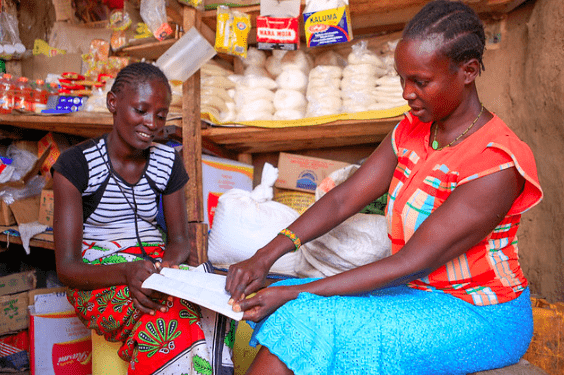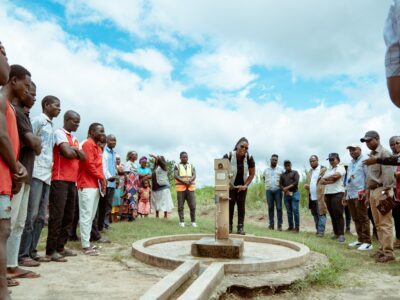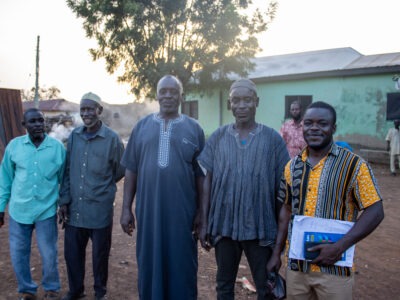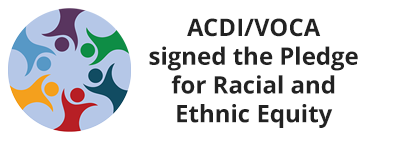
Because women and girls are already socioeconomically marginalized in many societies, they are especially vulnerable in emergencies. As a result of the COVID-19 pandemic, women and girls in developing countries face disproportionate hardships, and the progress being made to close existing gender gaps may falter or roll back. For that reason, it is important for the development organizations that serve them to apply a gender and social inclusion lens to their recovery responses.
The COVID-19 pandemic is a health crisis as well as a food security and economic crisis that strains supply chains, prevents agricultural activity, and causes economic slowdowns. Women make up a substantial proportion of agriculture producers and natural resource managers, and they tend to be over-represented in low-paid or informal jobs in economic sectors most affected by COVID-19.
Today, ACDI/VOCA published gender and social inclusion recommendations for programming and internal operations during COVID-19, as many organizations aim to revive the agriculture sector and help economic market systems perform better in a new, socially distant world.
Reducing Caregiving Burdens
Because of social norms, women and girls absorb more unpaid labor burdens, such as caring for the sick, elderly, and young children as well as managing household meals and sanitization during a pandemic. As caregivers, they stand the highest risk of infection while caring for the sick, which perpetuates the cycle of infection in households. Women tend to work in the informal economy, and many are not entitled to social protections, such as paid sick leave. Without it, they may continue to work and put themselves at higher risk of exposure.
Program interventions should avoid adding to the care burdens of women and girls and seek out ways to reduce it by promoting male participation in household care work, joint decision making, time saving options for women, and resources like cash transfers.
Preventing Job and Income Losses
Global trends show that more men than women will adapt to the changed work environment, and, unlike the global recession in 2008, women will face more job losses during the current crisis. Targeted women’s economic empowerment strategies will be needed to mitigate the effects of the virus and its containment measures. This may include providing cash transfers to ensure basic income, of which women have control and promote the recovery of local markets. Critical to cash transfers’ success is ensuring that delivery mechanisms (digital or otherwise) are designed and implemented with the safety and needs of women and vulnerable groups in mind.
Economic recovery responses to COVID-19 should also pay attention to sectors and business that employ women and marginalized groups. Women and girls make up a large part of the agricultural workforce as well as the tourism, garment, and food processing sectors, all of which will be inhibited by restrictions. Further, support measures should not only be targeted at large- and medium-sized enterprises, but also microenterprises and small businesses, where women entrepreneurs are more heavily represented.
Facilitating Access to Credit
In average times, women entrepreneurs struggle to secure loans. In the current pandemic, credit will be one of the main life rafts helping small businesses withstand the shocks. But given its high demand, availability may shrink. Adding to the barriers, many women who live in poverty are often less aware of how to find financial programs that would benefit their small businesses. Due to a lack of knowledge, skills, or confidence, they may not know how to renegotiate the terms of their existing loans.
Interventions to help both women and men access COVID-related relief measures, like deferred repayments, frozen debts, and special lines of credit, will ensure that some businesses reopen.
Preparing for Surges in Gender-Based Violence
Women and girls have a higher risk of experiencing gender-based violence. Stress over food insecurity, reduced income, quarantine, and travel restrictions correlates with increases in household violence. As frequent handwashing becomes a priority, women and girls will be forced to travel to collect water more, adding to their workload and increasing their risk of experiencing violence. With healthcare systems overloaded, survivors may have less access to support services. Programs will need to prepare for surges in gender-based violence where they operate and develop plans to monitor and mitigate it, where possible, with local partners.
Putting Women and Girls at the Center of Response Efforts
The factors to consider when designing program responses to COVID-19 are many. But it is necessary to address the potential fallout now to prevent a second COVID crisis — the one affecting women and girls at disproportionately high rates.
Read more in ACDI/VOCA’s guidance document, “Gender and Social Inclusion and COVID-19: Impacts and Recommendations for Agriculture and Market Systems Project Implementation.”
Comments







